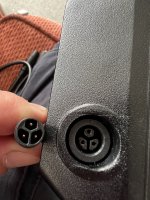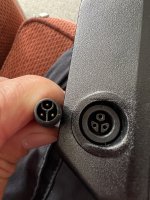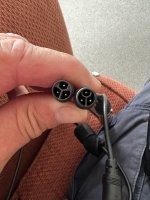Does the current (A) on the screen ever rise from zero?
If you actually see the screen's voltages on the plug (or beyond it, in any of the cable connections) with a voltmeter as it's happening, then the Satiator is probably doing what it is supposed to.
But the charge port of the BMS (C-) could be turned off because something inside the pack has exceeded a limit in the BMS (or the BMS is broken); in this event the Satiator can't pass current into the battery, so it will stop trying to charge because the shutoff current limit in the profile is reached and it thinks the battery is full (or the BMS has turned offf for balancing, protection, etc).
Note taht the test below may not work if the charge and discharge ports are separate at the BMS (most common type) because the intrinsic diode of the port control FETs will allow current *out* of the port even when it's disabled:
On the battery's charge port, if it reads the correct voltage there before connecting the Satiator, what does it read if you connect a load between the charge positive and charge negative? The load can be anything small, like an incandescent light bulb (12v car type or wall voltage type, etc), or a resistor if you have one laying around. The meter should be connected to the pins while the load is connected, so you can see what happens.
If the voltage remains the same as the unloaded voltage and doesn't drop significantly, the charger port is probably "on" and should pass current (see note above, though). If the voltage drops significantly or to zero, then the port is off and the BMS is protecting against charge because it sees a problem with the cells (real or not), or is defective or wired wrong, etc.
If the BMS has separate C- and P- (discharge) ports the test above wont' work correctly, and will seem operational when it may not be. You'd have to open the battery and test voltage at the B- lead (meter black at that point and meter red at B+) while the satiator is in force-start mode as it first ramps up to full voltage, to see if the voltage you see on it is also seen at the B+/B-. If the voltage there never changes even a flicker, and no current shows up on the satiator, then the C- port is probably off.
Then you can test voltages of the cells at the BMS PCB to see if any of them reads incorrectly at that point to figure out why the BMS has shut off the port.





